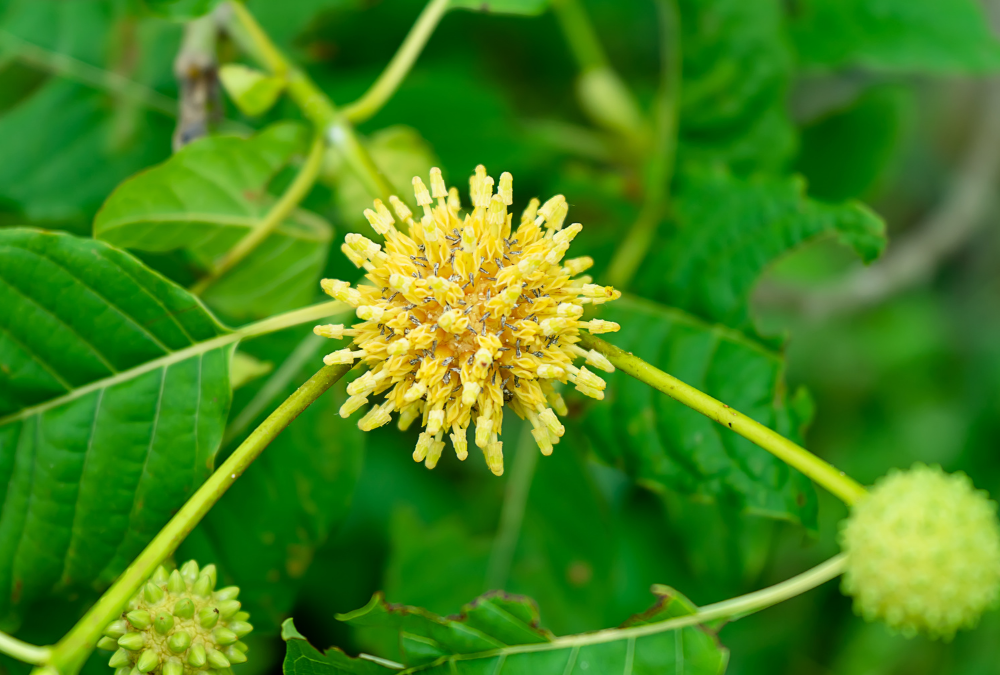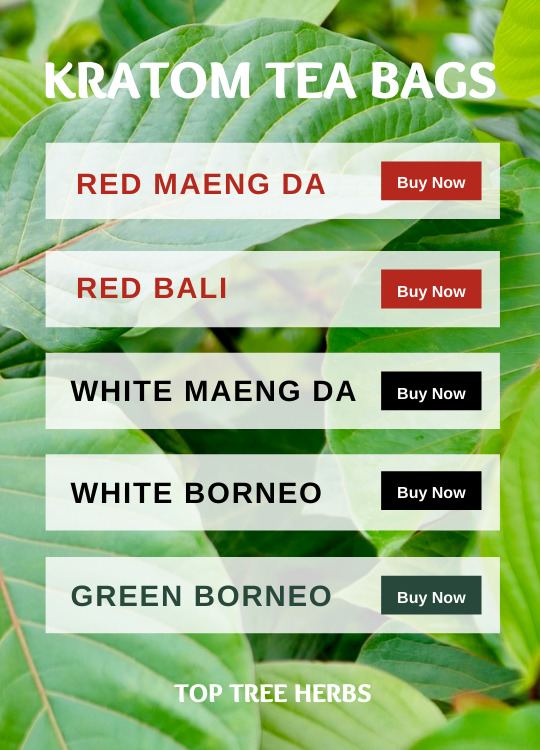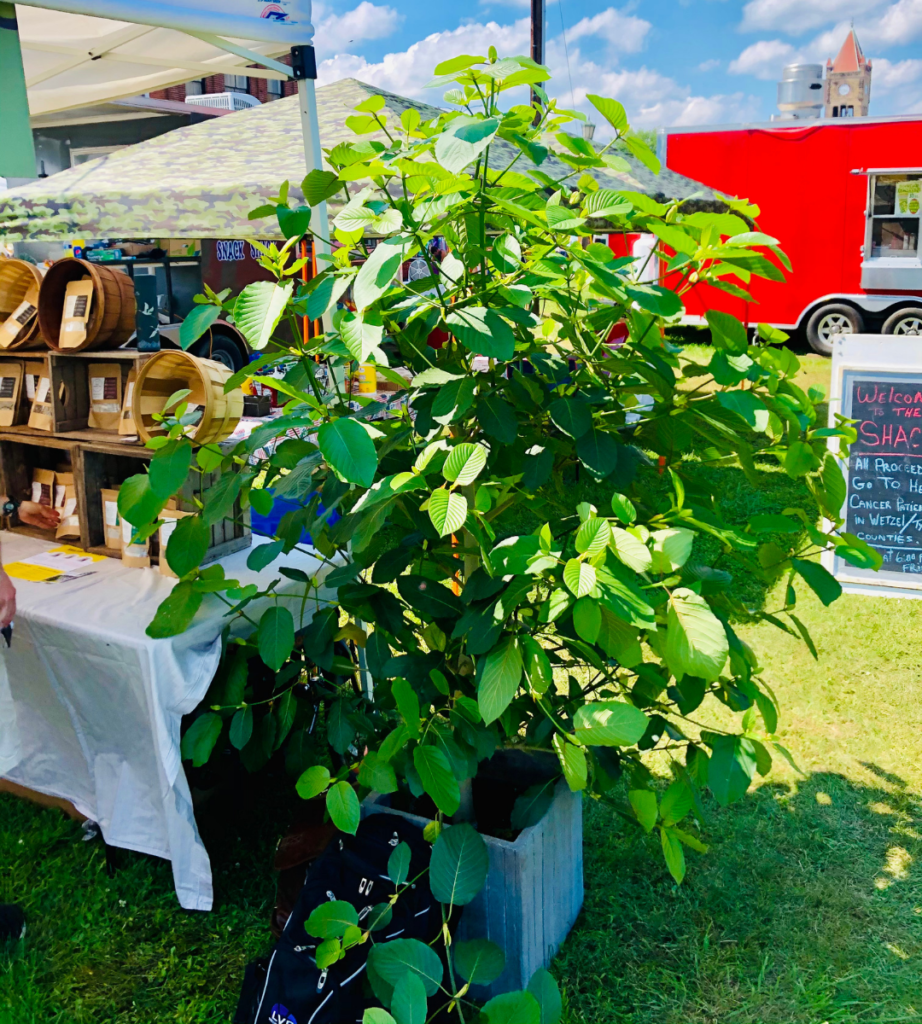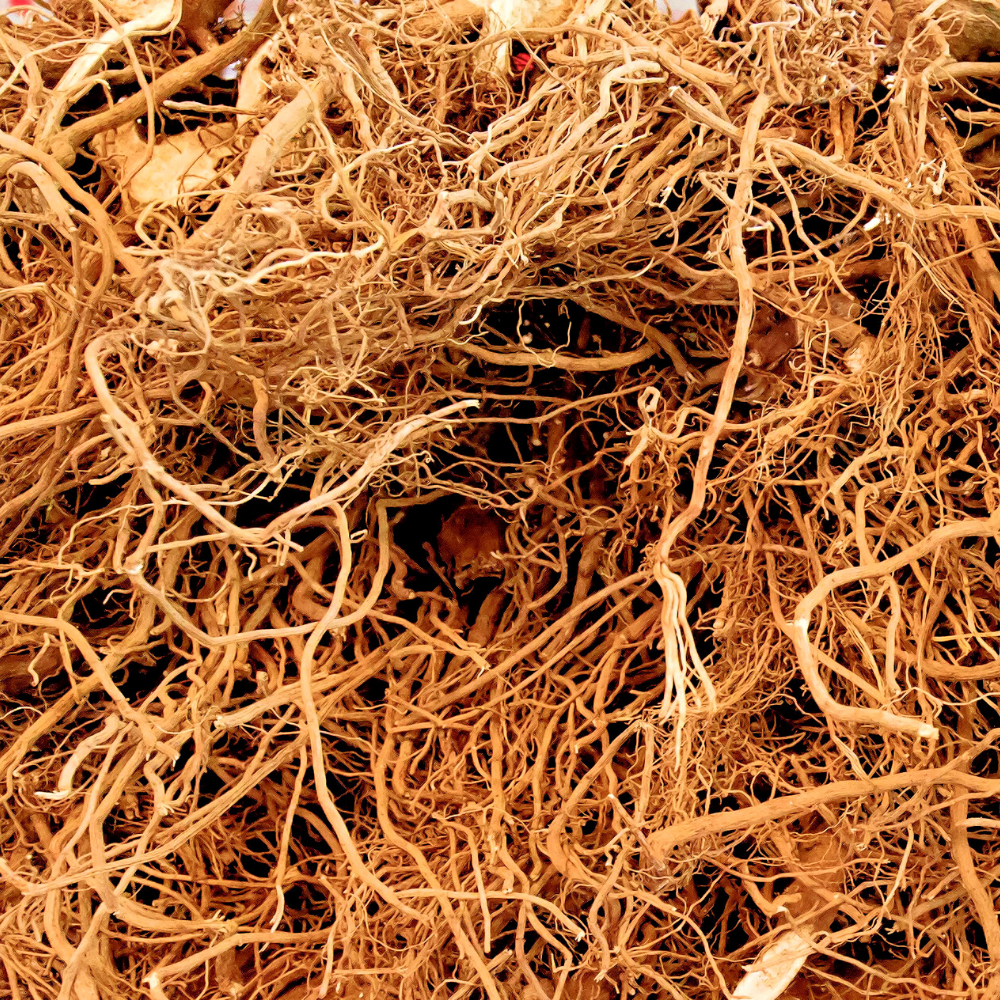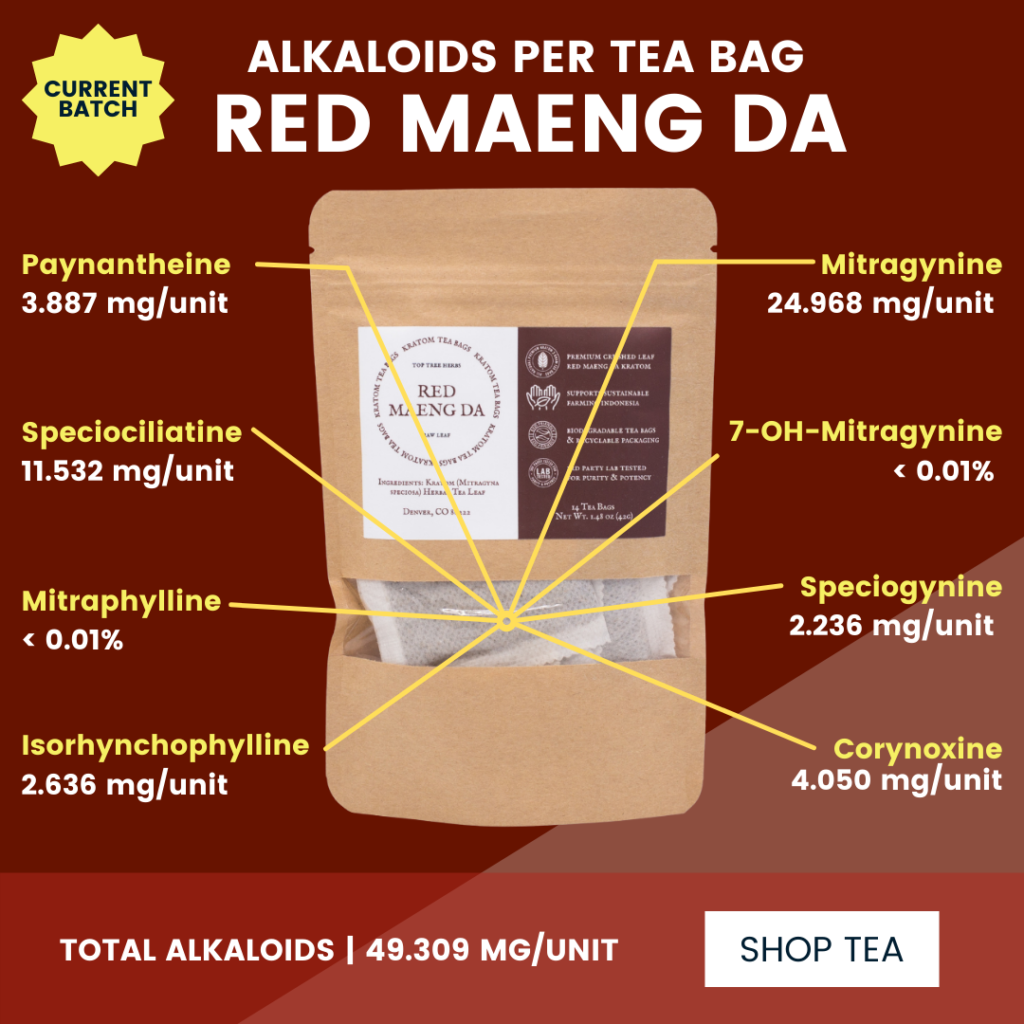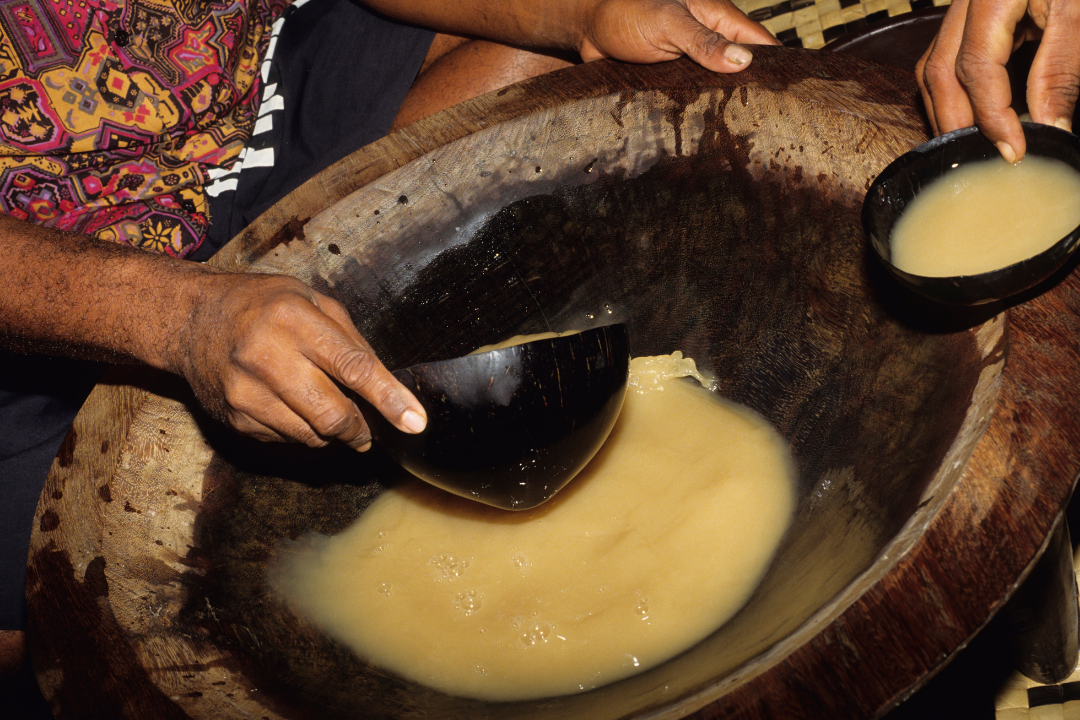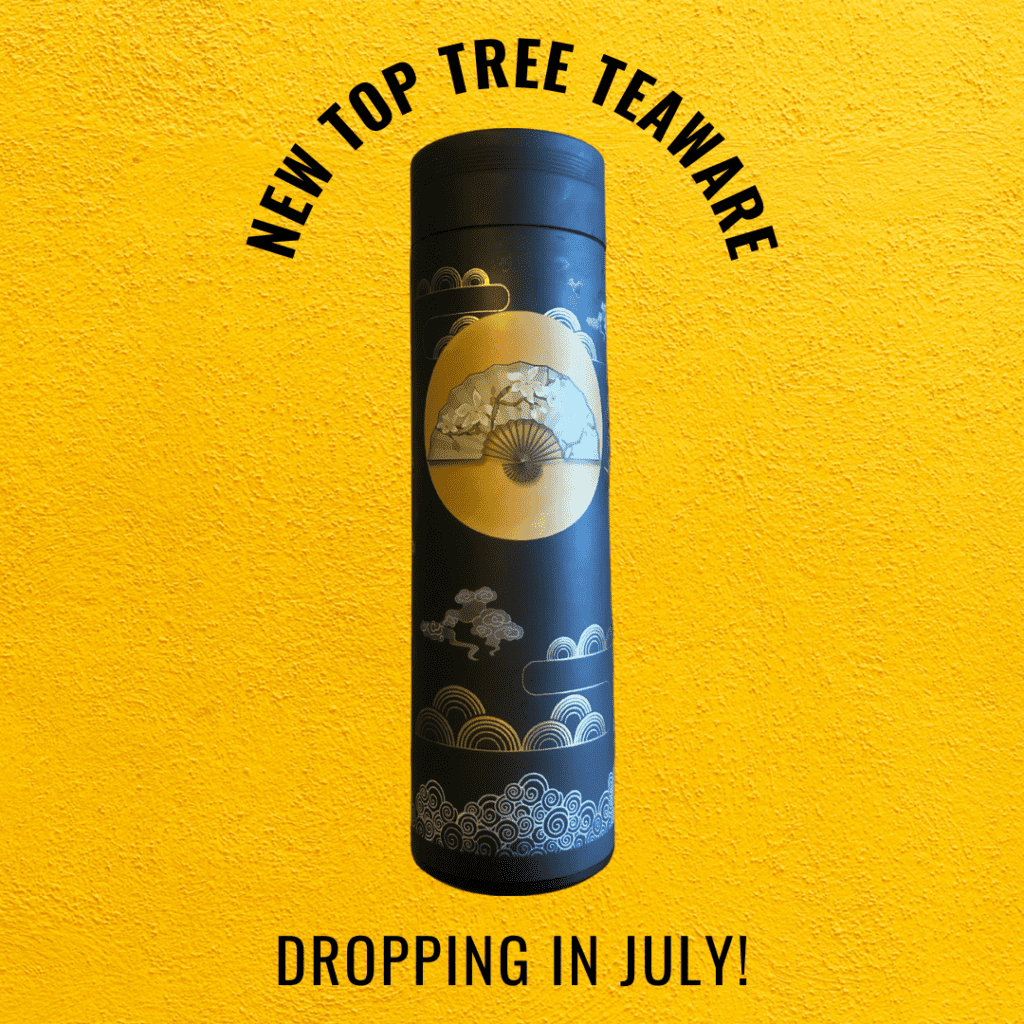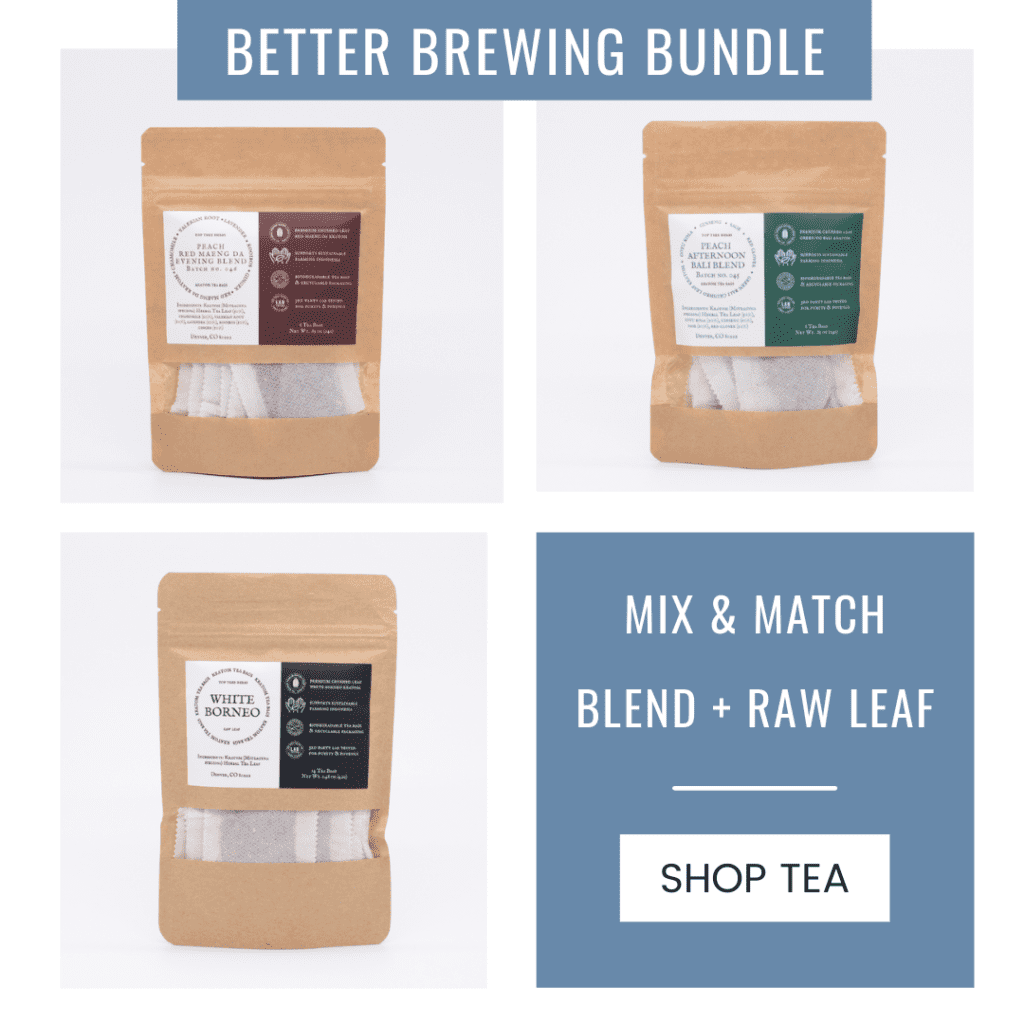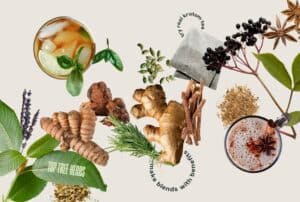Kava and kratom are both natural plant products that are often sold together at locations throughout the United States. Many cafes and bars that serve only kava and kratom have popped up across the country in the past few years, offering a range of brews and concoctions that either contain one or both of these plants.
But why are kratom and kava often found in the same non-alcoholic watering holes, and how are they related?
Kratom vs. Kava
The comparison of kava with kratom is a very new phenomenon that exists largely because of political and commercial forces. The plants are both recent arrivals to the United States, so we don’t have well-established cultural norms to guide the conversation. History doesn’t really help either: kava and kratom have no historical comparisons between each other.
Before we had Cars, Trucks, Buses, most natural products and foods available for purchase were regional and seasonal. Kratom and kava were no different. Each of them have been used for hundreds of years, but for most of that time, it was a locals-only conversation. Kava and kratom weren’t used by populations of people outside of the plants’ natural habitats until fairly recently.
The natural range where kava grows is geographically distinct from regions where kratom grows naturally, which means they share no relation in traditional pharmacopeias. As you can probably tell, in this post we’re going to do more than simply help you choose between kratom and kava…
Prohibition in the Americas
To begin peeling back the layers of the kava vs kratom comparison, we first have to appreciate the modern context in which this question arises.
In the United States, the prohibition of intoxicants has been haunting our political landscape since the turn of the 20th century. The stigma against indigenous intoxicants goes back even further to the earliest explorers of the “New World.”
Early Spanish explorers and the Jesuit priests that accompanied them remarked on indigenous use of Anadenanthera seed snuff along the coast of modern day Venezuela and Hispaniola. Missionaries and politicians in the American southwest demonized the use of peyote among various tribes and compared it to savagery and satanism.
In 1909, the federal government made their first major stand against substance use. In practice, this translated to the passing of the Smoking Opium Exclusion Act.
This first law pertaining to psychoactive substances set the pace for all to follow. It was a power play, a law written and enacted to target the recent wave of Chinese immigrants who brought opium-smoking with them. (Ironically, the use of opium among the Chinese immigrants was a result of the British and the East India Company meddling in the geopolitical trade of opium a century earlier.)
Acceptable States of Consciousness
Humans have sought out changes in states of consciousness for millennia. Some of these changes have been extreme, and some only slight. Regardless of religious, political, or social dogma putting up barriers, people have found a way to change, explore, expand, and even dull their states of mind. There are no cultures, to our knowledge, that were without any form of inebriant. That is, of course, until our Puritan founders entered into politics in the “New World.”
In a prohibitionist landscape, we are left with few mind-changing or consciousness-expanding substances. Aside from alcohol, tobacco, coffee, and tea, few socially acceptable options exist outside of the pharmacy. Yet through a combination of complex variables, kava and kratom have begun to enter the mainstream. Subsequently, there has been a rise of kratom and kava “bars” throughout most major cities. As a result, there is now justification to compare kava and kratom.
Let the kava vs kratom debate begin.
Kava vs Kratom: Plant Science
For starters, let’s remove any social connotations and associations pertaining to either kratom or kava. They are both natural products, and both produce phyto-molecules which humans have found to be desirable. The prefix phyto- simply means that the molecules come from a plant.
Kratom Culture and Botany
Kratom is an evergreen tree which naturally grows throughout most of Southeast Asia. It is in the Rubiaceae family, also known as the coffee family. Along with coffee, kratom is also related to quinine-containing plants as well as Psychotria viridis. It was first documented and added to the western botanical canon in 1836 by Dutch botanist Pieter Korthals.
The latin scientific name for kratom is Mitragyna speciosa. Kratom trees have been known to grow to over 80 feet tall. At the Top Tree greenhouse located in Appalachia in the United States, our three-year-old trees can put on 2 to 3 feet each summer. The leaves are a vibrant green, usually with a prominent red vein running from the petiole to the tip. However, vein colors play an important role in kratom categorization. We’ll discuss that at more length later in this post.
Once a kratom tree is three or four years old, it’s ready to be harvested. The younger plants, especially ones grown outside of their natural habitat, produce far fewer active alkaloids.
Kava Culture and Botany
Kava is a plant which grows in Oceania, and is in the pepper family (Piperaceae). There are several species which can serve as kava substitutes, but the “true” kava plant is Piper methysticum. The Polynesian people have actually been cultivating kava in Oceania for so long that it can no longer reproduce by seed. It is sterile.
Instead, the locals clone existing plants using root cuttings. Oftentimes, friends and neighbors share cuttings with each other, a gracious act that helps spread kava throughout the islands (Voogelbreinder, 280).
Though the kava plant is technically genetically identical due to the cloning process, each geographic location produces kava of different strength and effect. In general, a kava plant is a short shrub. It will grow to 6.5 feet after about two years. After reaching this hight, the growth is constrained to the thickening of the stalks and continued root formation.
On average, a three-year old plant can yield 10 kg of root material. In optimal conditions, a four-year old kava shrub grown in Vanuatu had a root stalk weighing 132 kg (Voogelbreinder, 280-281). After 4 or 5 years, the older shrub roots are ready. The end product is called “noble kava.” Compared to young or wild-harvested kava, noble kava has less-toxic flavokavains (or flavokawains).
Kava vs Kratom: Origin Stories
Unsurprisingly, both kratom and kava have a very long and important history in their respective cultures. Prior to contact with Westerners and the proliferation of the authoritarian dogmas of missionaries, people enjoyed both plants with little stigma. Although there have been countless controversies surrounding them, the plants’ importance safeguarded them in traditional cultures against the “civilizing” puritanical tide.
Kratom Tradition
Thailand has the longest documented use of kratom. Some Thai temples have engravings dating back 350 years that reference medicinal properties of the leaf.
In Thailand, farmers and laborers use kratom to get through long days working in the sun. They pick leaves from wild trees or their own trees. While they may start their morning by chewing a de-stemmed leaf, tea is the main event in the evenings.
[How to chew a fresh kratom leaf: fold the leaf in your half and pull off stem. Roll up the two halves into a quid. Chew for several seconds. Allow the juices to come into contact with the mucous membranes in your mouth. Finally, spit it all out!]
While chewing kratom leaves is done individually, making kratom tea is a more communal process. Thai farmers start each morning by picking about 5 kg of fresh leaves. They add the leaves to a large pot, heat it to a rolling boil, and leave it for 4-5 hours. After lunch each day, laborer pours their portion of tea into a 2-liter bottle, and they return to work with their energy aid in hand.
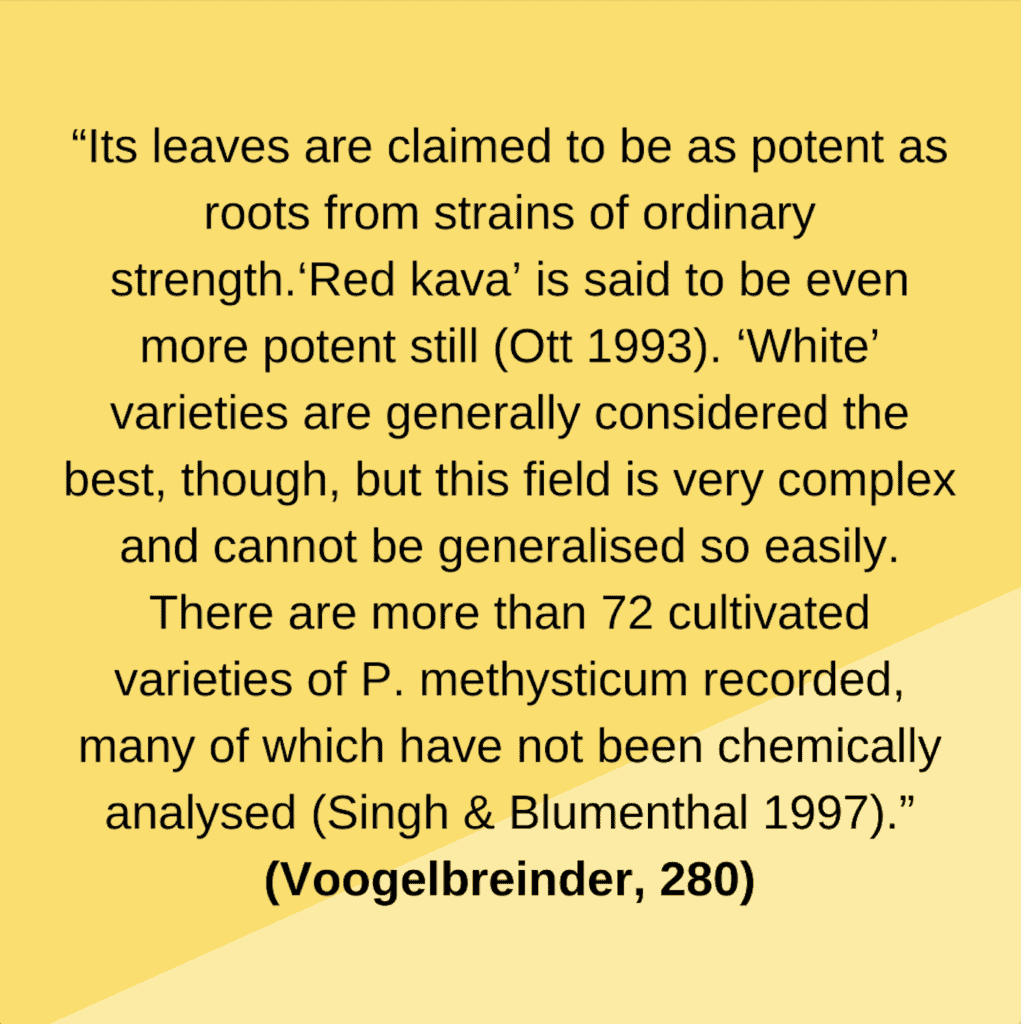
Because kratom is usually associated with increased productivity in laborious tasks, the majority of Thai people who have consumed kratom historically have been men. However, recent global trends indicate that women are starting to become the dominant demographic.
Kava Tradition
The Oceania territories include West Polynesia, New Caledonia, Solomon Island., Hawaii, Fiji, Samoa, Papua New Guinea and Melanesia (Voogelbreinder, 279). In Oceania, due to centuries of domestication, kava is now entirely dependent on human cultivation. From a consumer perspective, this means kava isn’t going anywhere soon. The demand is too large to let that happen!
Throughout Oceania, kava plays an important social role and is used in ceremonies for numerous significant life occasions. At ceremonies, social standing dictates who receives kava and when people are served. Upon their respective visits to different countries in Oceania, Lyndon Johnson, Queen Elizabeth, and Pope John Paul II were all served kava.
Kava’s popularity throughout Oceania has led to conflicting origin stories, but regardless of which fable you accept, one thing is clear: the plant has a central role in daily life. It was even carried by early Polynesian explorers as they settled the various islands of the south Pacific. It is a standard gift at weddings, and some kava varieties are ornamental and reserved only for chieftains.
The Effects of Kava vs Kratom
Both kratom and kava produce distinct effects that various human populations have found desirable. Without these effects, each plant likely would not have enjoyed such a long and robust history of traditional use. While the effects have led to kratom and kava’s popularity, they are also what draws the ire of certain authoritarian governing bodies.
Kratom Effects
Kratom has a range of effects that vary depending on the strain and the amount taken. With smaller serving sizes, kratom typically has energizing effects. This effect is central to the use of kratom by Thai laborers. Its pattern of use parallels the energizing effect of coffee, tea, and other caffeinated beverages.
In medium serving sizes, usually around two or three tea bags (6 to 9 grams) depending on your weight, the effects are more heady. They can be calming and balancing, helping with focus and relaxation.
Finally, when taken in larger serving sizes, the effects can soothe the body and help you relax and unwind. In Thailand in the early 1940s, many people used these larger serving sizes to transition away from using opium. Opium use was state-sanctioned, and its purchase by Thai people brought in a large amount of tax revenue for the Thai government. Because the switch from opium to locally-available kratom sunk the government’s tax revenue from opium sales, kratom was eventually made illegal.
Kava Effects
Though there are some traditional medicinal uses for kava, it’s primarily a social beverage. Kava generally increases talkativeness, much like alcohol, but doesn’t muddy the mind. Instead, it is often described as a thought-clarifier. Unlike alcohol, imbibing kava frequently results in a quieting of the guests at the ceremony or party.
As one drinks more kava, the social lubricant effect begins to transition into a sleepy dream-like state. Those who drink kava find it very easy to fall asleep while feeling the effects of the brew. Large quantities of kava are more likely to result in sleep rather than the amnesic drunkenness of alcohol or benzodiazepines.
The fact that the cheaper, more readily available alcoholic liquors haven’t supplanted the use of kava should be enough indication that the effects are different.
How to Take Kava vs Kratom
When considering how to take kratom or kava, it is important to remember the many centuries of traditional use. Today, both kratom and kava are taken in modern formulations which not only are not as effective, but are thought to have some unpleasant or even toxic effects.
Kratom Preparation
Kratom is traditionally chewed and spat, or brewed into a tea. In the United States, however, the most common way of taking kratom is swallowing leaf powder. This is commonly known as toss and wash. This bastardization of kratom use is the first time in the many centuries of kratom history that the leaf is consistently swallowed.
In population studies of kratom users in the United States, over 30% reported stomach issues (Grundmann, 2017) Unsurprisingly, these users were also swallowing the leaf. At Top Tree Herbs, we believe that there is often a reason why traditions go unchanged for so long. In examining the kratom market in the United States, we realized that there needed to be more options aligned with the traditional tea brewing practice of the Thai consumers.
Using kratom tea is very simple, but different from standard tea found at the supermarket. To brew kratom tea you must use an acid, like lemon or lime juice, to help the alkaloids leave the leaf. With the lemon juice, you must also steep in hot water for at least 20 minutes. To do this, we recommend a thermos to help keep the brew hot the entire time.
Once the tea is brewed, you will be left with a golden yellow tea. Simply add some sugar or honey to taste and enjoy! The same tea bags used in the first brew can then be used for a second brew using the same acid + 20 minute steep time preparation as before.
Kava Preparation
In traditional kava preparations, elders give the root to a young boys and girls who chews the root (Voogelbreinder, 280). The enzyme ptyalin found in saliva is thought to potentiate the kavalactones responsible for the effect. Kava is also ground with a coral mortar and pestle, or between a rock and log. On an industrial scale machines now carry most of the burden.
Once the root is ground, it is mixed and strained in cold water. The cold water is crucial for extracting only the desirable, non-toxic kavalactones. The modern extracts which use solvents have been reported to absorb some toxic molds and flavokavains which would otherwise not be absorbed in the traditional cold water extraction.
The preparer then splits a coconut shell, which creates two kava serving bowls. While you sip kratom tea, you drink kava in one swift shot. Traditionally, the most important person in the group drinks first. The first cup poured in libation to the gods.
Kratom vs Kava Pharmacology
Kava and kratom are both lacking in complex pharmacological assays. Kratom, specifically, lacks human trials elucidating it’s safety and mechanism of action. Nevertheless, kratom and kava has centuries of traditional use.
To us, this shows that the plants are relatively well tolerated by most people. But let’s break this down a bit more.
Kratom Pharmacology
Kratom exerts its mechanism of action through its myriad of phyto-alkaloids. These alkaloids all resemble each other, but with each slight difference between them have widely varying pharmacological effects. The dominant alkaloid in kratom, mitragynine, has been shown to have activity at the MORs. Unlike other MORs agonists, mitragynine only exerts its action through G-protein mediated effects, and not through beta-arrestin proteins. The beta-arrestin pathway is what causes respiratory depressions, and so the current hypothesis put forward by Dr. Krugel is that kratom is without this typical MOR side effect.
The other kratom alkaloids have been shown to have varying activity upon the serotonin, dopamine, and adrenergic receptors as well. Much more research is needed to elucidate the properties of these alkaloids. Top Tree Herbs is currently partnering with Dr. Oliver Grundmann and Dr. Chuck Veltri to conduct a survey based on eight of the main alkaloids found in our kratom tea. With luck, the results from this survey will allow a better understanding of the pharmacodynamics of kratom’s effects.
Kava Pharmacology
Kava’s effect is mediated through a chemical class of molecules called kavalactones or kava-pyrones. As aptly put by Snu Voogelbreinder:
“There are several major kava-lactones – those being kawain, yangonin, methysticin, 7,8-dihydrokavain, dihydro-methysticin and 5,6-dehydrokawain [desmethoxyyangonin; appears to have little effect]. Any given strain of kava may contain about 3 major kava-lactones [more than 70% of total], and others in traces; these variations give different effects from different cultivars.” (Voogelbreinder, 280)
Kava molecules vary in pharmacological effects, despite having a similar underlying structure. People believe kava effects GABA receptors. In practice, this means its effect is similar to other GABA mediated substances, like alcohol and benzodiazepines. GABA is a neurotransmitter which signals the end of a nervous process. In effect, they are like the body’s STOP sign. Having more GABA chills nervous signalling rapidly.
That said, pharmaceutical companies have blocked GABA receptors before giving a study participant kava, and it didn’t stop the effect. In other words, there’s more going on than we can explain today.
Kava and Kratom Strains
Kava and kratom share many similarities when it comes to strains. Namely, both are distinguished by the location in which they were grown, and not by genetic differences.
Kratom Strains
Kratom strains are distinguished by the color of their veins. Commonly, the difference between kratom types is noted in the location in which they grew and the color of the veins. However, this delineation of kratom types is coming into question. It is now recognized that most of the color change that is advertised by vendors as different kratom strains from different locales actually comes from a post-harvest curing process.
For more on the myth of kratom strains, read our guide here!
Kava Strains
Kava, like kratom, is also distinguished by color. For instance, there is a popular Hawaiian kratom strain known as black kava which is famous for its strong effect (Voogelbreinder, 280).
As mentioned earlier, however, all kava is genetically identical as they are no longer able to reproduce through anything but human mediated cloning. In other words, kava strains are the result of different growing conditions and cultivation practices.
Noble kava varieties are the most desired. This title denotes that the kava root powder came from a choice cultivar with low flavokavain content. Usually people harvest noble kava powder from shrubs at least five years old, as they are stronger and more desirable. People make the lower quality kava by taking from non-cultivated kava plants. This close relative to kava is rarely used in a traditional setting, and is known to contain higher levels of flavokavains, which are toxic to the liver.
Is Kratom Legal?
As we discussed in the beginning of this post, it is the tendency of our culture to condemn and make illegal different mind altering or expanding plants and substances. Luckily, this prohibitionist tendency hasn’t affected US kava.
Nevertheless, the FDA is concerned about liver toxicity concerns. In fact, they issued a statement in 2002 warning about non-cultivated kava specimens from Vanuatu. Apparently, the kava from this region had high flavokavain content.
Kratom still faces regulatory challenges in the US, however, so the story isn’t over. As an example of what can happen, the DEA attempted to schedule kratom in 2016. Without the outpouring of grassroots activism, they would have been successful. In our view, something like this could happen with kava one day. Only time will tell.
Still, regardless of what their parent agency suggested, the FDA has still kept kratom in their crosshairs. Six states currently list kratom as a schedule I substance, effectively making the possession of the leaf a criminal offense. Organizations like the American Kratom Association (AKA) as well as several grassroots organizations are currently fighting to protect kratom in the States
Conclusion
In this post we covered the botany, origin stories, effects, how to consume, pharmacology, strains, and legality of kava vs kratom. Now that we have compared the two plants we hope have all you need to make an educated decision. If you decide you would like to try kratom, we recommend our first-in-class kratom tea bags.
